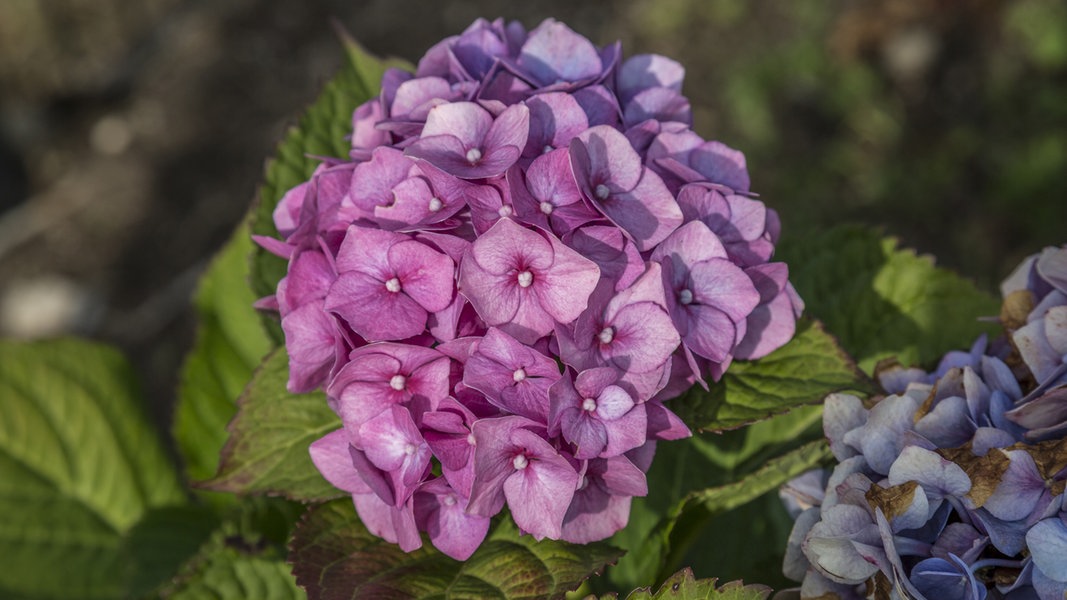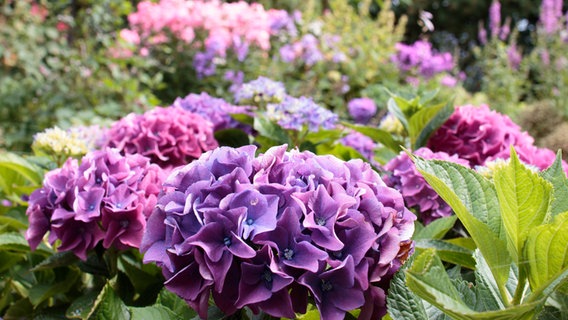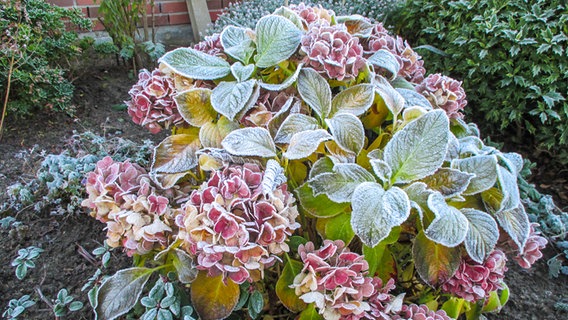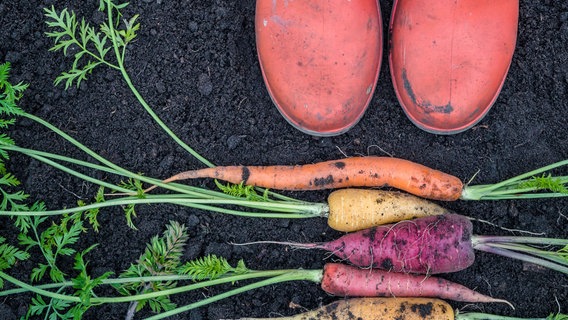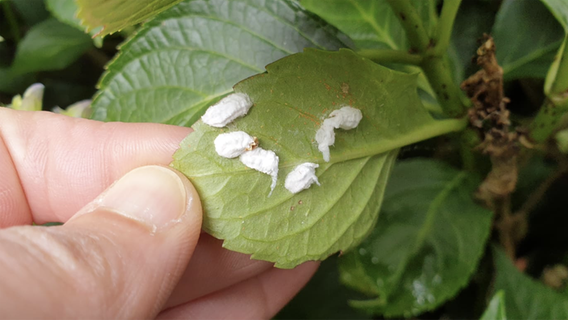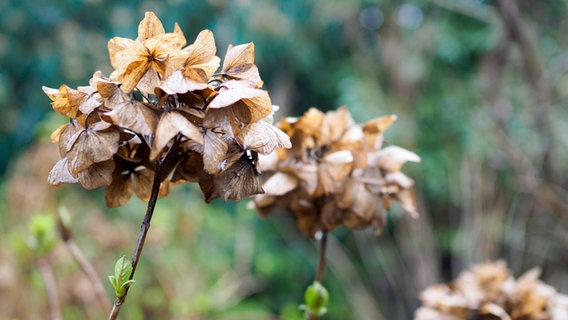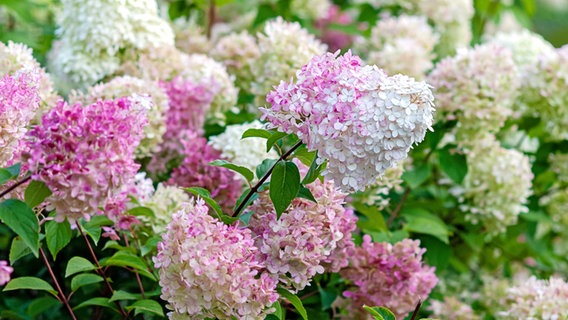Status: 05/10/2023 2:57 p.m
With their pretty umbels, hydrangeas beautify the garden. If they grow in the right location, the effort for care is not particularly high. However, the plants need a lot of water.
For a long time they were considered old-fashioned, but today they are blooming again in many gardens: hydrangeas (Hydrangea). The best known is the garden hydrangea, which is also known as the farmer’s hydrangea. Naturally, their flowers are purple, pink or white. Flowering time is from June to September, depending on the variety. The location should be in partial shade and the soil should be rich in nutrients and not compacted.
Care: Water hydrangeas vigorously
Hydrangeas need a lot of water.
In general, hydrangeas love water, so the soil must be kept moist, especially in dry and warm weather. This also applies to hydrangeas in pots – although care must always be taken to ensure that there is no waterlogging. If the heat is persistent, they should be watered in the morning and evening, because the plants evaporate a lot of water through their many leaves.
Watering trick for hydrangeas in the bed
If you can’t water for a day or two, it’s worth buying a simple plastic mason’s bucket, which is available in hardware stores in various sizes for little money. Simply drill a hole in the bottom of such a bucket. Fill the bucket with water and place it in the bed next to the hydrangea. The water then slowly drips through the small hole into the root area of the plant, helping it through the hot day.
Trick for watering in the pot
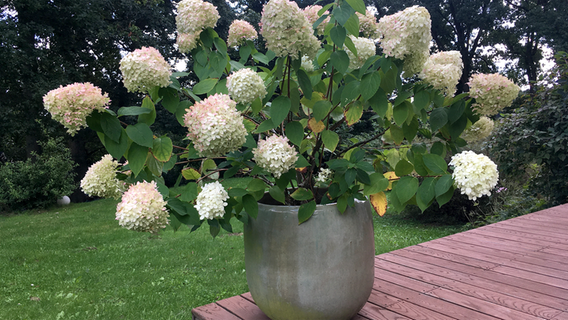
Hydrangeas in pots are eye-catchers on every terrace.
If you need a watering aid for your balcony plant, you can use a plastic bottle. Poke or drill a small hole or two in the cap of the empty bottle and fill the bottle with water. Unscrew the lid and stick it upside down in the soil of the flower pot. The water slowly drips out of the lid and supplies the hydrangea for some time. To be on the safe side, you should try out beforehand whether enough water escapes or whether another hole in the lid is necessary.
Plant hydrangeas – best in late summer
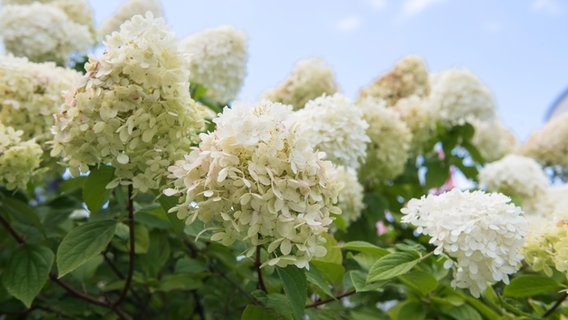
Panicle hydrangeas form lush, particularly attractive flowers.
A profound, relaxed and humorous one Garden soil is ideal, the location should be sheltered from the wind. Before planting, place hydrangeas in a bucket of water for about 10 minutes to soak the root ball. The best planting time is late summer. In this phase, the plants still have many weeks to form roots. In addition, the shapes and colors of the flowers are best judged when you buy them. Hydrangeas are also very easy to grow in summer propagate with cuttings.
Anyone who is interested in new, unusual varieties can take a look at the “Schloss Wackerbarth” farmer’s hydrangea: it has a three-colored flower. “Four Seasons Amethyst” keeps changing color during flowering. Anyone looking for a low-growing hydrangea will find a pretty specimen in “Tovelit”.
Pruning hydrangeas properly
When and how much a hydrangea is pruned depends on the species. With the popular peasant hydrangea, only frozen or dead shoots should be removed in early spring. If you cut too much, the plant will not flower as profusely or not at all in the following summer. If an older hydrangea is to be rejuvenated, a radical pruning up to a hand’s breadth above the ground is worthwhile. The panicle hydrangea, on the other hand, tolerates a strong pruning and rewards this with bushy growth and many flowers.
Fertilizer gives strength
Special hydrangea fertilizer is available in specialist shops, but azalea or rhododendron fertilizer is also suitable. The fertilizer should be added between March and July. The fertilizer is nitrogen-rich and contains little phosphorus.
Further information
Hydrangeas overwinter
Hydrangeas are generally hardy. To be on the safe side, you should protect them from severe frost with a light winter protection made of brushwood. For potted plants, the vessel should have a diameter of at least 30 to 40 centimeters. Plants in smaller pots should overwinter in a largely frost-free but cold place at around 3 to 5 degrees.
Further information
Which hydrangeas can be dyed blue?
Blue hydrangeas do not exist naturally – only the composition of the soil causes the flowers to turn blue. However, this only works with certain varieties of farmer’s and plate hydrangeas with pink flowers. Pure white or red flowers cannot be recolored. The color change takes some time and is usually not complete until the second year.
Acid soil and alum needed for bluing
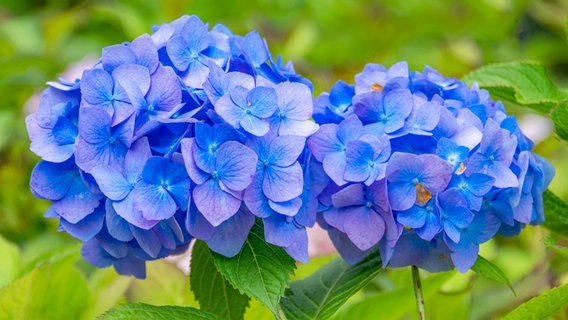
By nature, there are no blue hydrangea flowers.
An acidic soil (pH value 4.0 to 4.5), as is important for rhododendrons, for example, is important for blue flowers. Special soil for rhododendrons is therefore recommended for planting in most gardens. Alum (aluminum salt) is also required for the blue coloring, which is available, for example, in the garden trade as a combined fertilizer.
In the acidic environment, the plant can absorb the alum and store the pigments in the flowers. In order to preserve the acidic soil, especially when planting in tubs, make sure that you only use rainwater or very soft water.
Location and flowering time for different hydrangea species
In addition to the classic farmer’s hydrangea, there are other attractive hydrangea species that stand out due to their special leaf shapes or flowers.
- Harvest hydrangea: It blooms from August to October. Their mostly white flowers turn green or pink in autumn, depending on the variety. The location can be sunny or semi-shady.
- Waldhortensie: It is suitable for both sunny and shady places, which should ideally be sheltered from the wind. The rather inconspicuous flowers appear between June and September.
- Oakleaf Hydrangea: It has particularly striking leaves. They are deeply slit and have a beautiful fall color. The white flowers appear in July and August, the location should be sunny to semi-shady.
- Samthortensie: It has conspicuously velvety, hairy leaves. The purple flowers appear in July and August and provide food for insects. The white wreath of the false blossom is particularly striking. The location should be in the semi-shade if possible.
- plate hydrangea: It also has mock flowers that attract insects with their color. Flowering time is from July to October. The location can be sunny to semi-shady
- climbing hydrangea: It is the only one of its kind that can grow up walls, trees or trellises. This hydrangea species is also popular as a food source for insects. Even in winter it impresses with its special bark structure and colour. Climbing hydrangeas grow in sunny and shady locations. Flowering time is from June to July.

